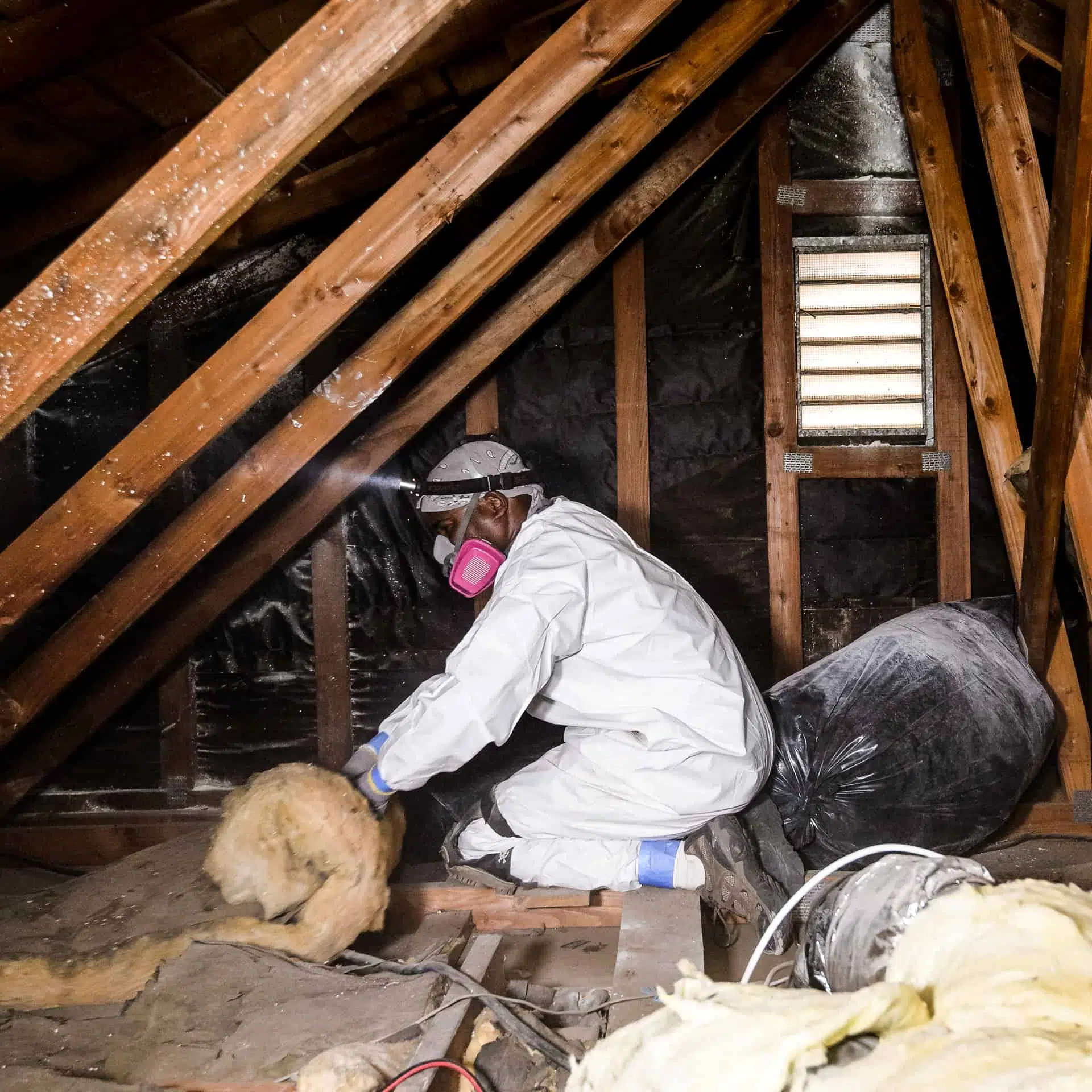Insulation Remover – How to Get the Job Done Safely and Efficiently
Insulation removal is the process of removing old insulation from walls, ceilings or floors. This can be done for a variety of reasons. Upgrading the insulation to improve energy efficiency is one reason, but it can also be due to damage from pests or water leaks.
Old, damaged or moldy insulation is a health risk and can lead to structural damage. Replacing it will eliminate gaps, air leaks and poor thermal performance. Contact Perth Insulation Remover now!

Vacuums are powerful machines used to remove insulation materials from different parts of a building or home. Whether removing spray foam or other types of insulation, it is essential to use the right equipment in order to get the job done quickly and efficiently. For many contractors, vacuums are one of the most valuable tools available to them. Understanding how to operate a vacuum properly can greatly improve your ability to perform insulation removal services and boost your overall productivity.
To properly use an insulation removal vacuum, make sure to follow the manufacturer’s instructions and wear personal protective equipment. Clear the work area of any obstructions and ensure that it is free from debris that could hinder the machine’s performance. Once the equipment is set up, begin by turning on the power and activating the machine’s motor. Next, position the hose of the insulation removal vacuum over the area where you wish to extract material and start sucking up the insulation. Once the hose is filled with insulation, disconnect the hose and dispose of the materials according to your local regulations.
Insulation removal vacuums are designed to be fast and efficient, allowing you to complete jobs more effectively while reducing waste materials. They are also equipped with high-powered suction motors that can handle a variety of different materials, including fiberglass, cellulose, and spray foam. In addition, most of these machines can be easily maneuvered by contractors and are able to handle large volumes of waste. Once the vacuum has been used, it is important to properly clean the machine in order to prevent any harmful contaminants from entering the air and contaminating the environment.
Wire Strippers
There are a number of different wire strippers available, from handheld models to industrial machines. Choosing the right one for your needs is essential, as electrical work is often done by hand and can put you at risk of injury if you use a non-safe tool or knife.
Wire strippers expose the metal wire conductor, allowing you to connect or terminate the cable with other conductive cores. They also help troubleshoot and repair electrical problems by allowing you to see the condition of the insulation on the wires, which may indicate issues with the wiring itself.
The type of stripper you choose depends on the type and thickness of insulation you need to remove and the kind of wires you’re working with. For example, some stripspers are designed for multiple types of sheaths, while others are intended for specific sizes of wire. Some have different blade options, so you can adjust them to fit the type of sheath you’re working with.
When selecting a wire stripper, look for a model with insulation barriers that prevent contact with live wires and safety features that minimize the risk of cuts during use. You can also find a wide range of additional features that enhance user comfort, including spring-loaded handles and locking mechanisms.
Regardless of the type of stripper you choose, be sure to follow all manufacturer’s instructions for safe use. This will help ensure that the insulation is removed without damaging the conductor. Depending on the type of stripper, this may involve positioning the wire correctly and aligning it with the correct notch, as well as activating the appropriate heat source.
For example, an infrared or laser wire stripper typically uses heat to melt or burn away the insulation, allowing it to be easily pulled off with your hands. If you’re using a manual wire stripper, be sure to align the cutting jaws or settings to match the gauge of the wire you’re working with. Lastly, when you’re ready to begin, apply steady pressure and rotate the tool around the wire to score it with the blades.
Safety Equipment
Insulation removal can be a difficult task for homeowners to tackle. It requires proper identification and preparation of the work area to minimize health hazards and reduce risks of accidents. Different types of insulation have distinct characteristics that influence how they are removed.
Identifying the type of insulation in a house is important, as it dictates the tools and safety precautions necessary for the project. For instance, spray foam insulation expands upon application and may require special tools for proper removal. Other types of insulation, like cellulose and fiberglass, are loose-fill and can be vacuumed or scooped from walls or attics.
It is also important to wear appropriate protective gear, including gloves, goggles, a mask, and a respirator. Having these protective items will minimize the risk of contact with potential contaminants, such as pests and mold. Other essential equipment includes a dustpan, rake, and a vacuum hose specifically designed for insulation removal. In addition, heavy-duty waste bags are a must to collect and contain the removed insulation for safe disposal.
Homeowners should take extra precautions if they suspect that their insulation contains asbestos, which is hazardous and requires specialized handling. Professionals follow strict guidelines when working with asbestos, including sealing off the area to prevent contamination, using specialized equipment, and employing containment systems to limit the spread of airborne fibers during removal.
A homeowner should be aware of the cost of removing and replacing insulation before making a decision on whether to do it themselves. The cost of the job will vary depending on the size of the area and the type of insulation being installed. It is best to get multiple quotes for comparison purposes.
Insulation removal is a dangerous task, and many DIYers attempt the process without any professional assistance. In one tragic case, a 41-year-old Springfield, Massachusetts worker died when the spray foam chemicals he used to apply in an attic caught fire and engulfed the room. This is a clear reminder of the dangers that can occur when this type of work is not done properly, and why it is always recommended to hire a professional.
Contact Us
Insulation removal can be a complex process that requires the right tools and methods. In addition, specific safety precautions must be followed to ensure that the job is performed safely and efficiently.
Insulation that has become damaged due to pest infestation, mold growth or water damage can pose a health risk and may compromise the structural integrity of a home. This type of insulation should be removed as a priority and replaced with new, quality insulation to avoid costly structural damage or energy loss.
The best way to remove old attic insulation is with a vacuum system, like the ones used by professional insulation contractors. This method allows the insulation to be removed in smaller pieces and is safer for workers. In addition, this type of insulation removal can also be done faster than manual removal.
During the insulation removal process, it is important to follow any local regulations and dispose of the material according to applicable rules. Most insulation companies offer disposal services for this material so that you don’t have to worry about disposing of it yourself.
It is also a good idea to use a high-efficiency particulate air (HEPA) filter during the insulation removal process to manage dust and other particles that may be produced during the work. This will prevent the particles from spreading throughout your house and causing additional problems.
Upgrading your home’s insulation is a great way to improve energy efficiency, reduce your home’s carbon footprint and increase comfort levels. However, it is important to hire a professional to ensure that the job is completed correctly and safely. Contact Edwards/Mooney & Moses to learn more about our insulation services.






